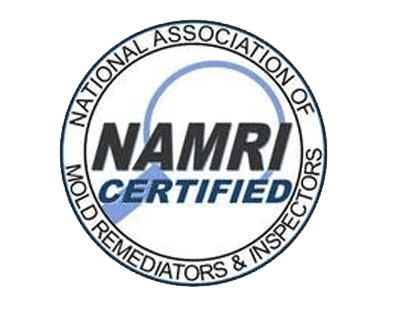If you’ve ever experienced a fire in your home, you know how devastating it can be. Not only can it cause major property damage, but it can also pose a serious risk to your health. The question is, is fire damage toxic?
There’s no straightforward answer to this question. While fire damage itself may not be toxic, the smoke and various chemicals released during a fire can have harmful effects on your health. Depending on the materials burned, fire smoke can contain a variety of dangerous chemicals, including carbon monoxide, hydrogen cyanide, and formaldehyde.
Exposure to these toxic substances can cause respiratory problems, skin irritation, eye irritation, and other health issues. Children, the elderly, and individuals with pre-existing health conditions are particularly vulnerable to the effects of fire damage.
It’s essential to take steps to minimize your exposure to fire smoke and other potentially hazardous materials following a fire. By understanding the risks and taking preventive measures, you can help protect yourself and your family from the harmful effects of fire damage.
Key Takeaways
- Fire damage smoke and toxins can be harmful to your health
- Exposure to fire-damaged materials can release toxic chemicals
- Soot and ash particles can have serious health implications
- Preventive measures can minimize health risks associated with fire damage
- Stay informed and take steps to protect yourself and your loved ones
Understanding Fire Smoke and its Components
When a fire occurs, it releases smoke into the air. Fire smoke is a complex mixture of gases, particles, and other chemicals that can have harmful effects on health.
The composition of fire smoke can vary depending on the materials that are burning. It can contain carbon monoxide, formaldehyde, hydrogen cyanide, and other toxic chemicals. These compounds can cause respiratory problems and other health issues when inhaled.
During a fire, these harmful chemicals can become airborne and spread beyond the immediate vicinity of the flames. Smoke may also settle on nearby surfaces, leaving behind dangerous particles that can be ingested or inhaled.
To get a better understanding of the potential repercussions of fire smoke, let’s take a closer look at its components:
| Component | Potential Health Risks |
|---|---|
| Carbon Monoxide | Reduced oxygen supply, headaches, nausea, confusion, and even death in high concentrations |
| Formaldehyde | Eye, nose, and throat irritation, coughing, wheezing, skin irritation, and certain types of cancer. |
| Hydrogen Cyanide | Respiratory failure, loss of consciousness, and even death in high concentrations. |
| Particulate Matter (PM) | Respiratory problems, coughing, wheezing, irregular heartbeat, and reduced lung function. |
| Polycyclic Aromatic Hydrocarbons (PAHs) | Reduced lung function, coughing, wheezing, and cancer in long-term exposure. |
It’s essential to bear in mind that the danger of fire smoke doesn’t necessarily cease once the flames have been extinguished. Hazardous chemicals can still be present in the air and on surfaces. Therefore, it’s crucial to approach fire damage cleanup with great caution to minimize the risk of harmful health effects.
Next up, we’ll explore the adverse health impacts that fire damage can have on individuals, ranging from respiratory issues to skin irritation.
Health Impact of Fire Damage
Exposure to fire damage can have severe health implications. When a fire occurs, it releases various toxic chemicals and particles into the air, which, when inhaled, can damage your lungs and lead to respiratory issues. These toxins can also irritate your skin and eyes when they come in contact.
According to the American Lung Association, smoke from fires is a mixture of gases and fine particles, including carbon monoxide, volatile organic compounds, and nitrogen oxides. These substances can cause coughing, wheezing, shortness of breath, and chest pain, among other symptoms. Young children, elderly individuals, and people with pre-existing respiratory or heart conditions are particularly vulnerable to these health impacts.
Furthermore, exposure to soot and ash particles, which are commonly left behind after a fire, can also pose significant health risks. These particles can irritate your respiratory system and lead to long-term respiratory health issues.
If you or your loved ones have been exposed to fire damage, it is crucial to seek medical attention if you experience any unusual symptoms. Your healthcare provider may recommend specific treatments or medications that can alleviate your symptoms and help prevent long-term health issues.
Toxic Chemicals in Fire-Damaged Materials
When materials and items burn, they can release toxic chemicals that pose a health risk to you and your loved ones. Substances such as asbestos, lead, and mercury can be present in fire-damaged materials. Exposure to these toxic chemicals can cause respiratory problems, headaches, dizziness, and even cancer in some cases. It is crucial to handle any fire-damaged materials with care.
Toxic chemicals can also be present in water used to extinguish a fire. Firefighters often use foam and other suppressants that can leave behind hazardous residue. This chemical residue should be cleaned up thoroughly to avoid further contamination after a fire.
| Material | Potential Hazards |
|---|---|
| Asbestos | Respiratory problems, lung cancer |
| Lead | Brain damage, nervous system damage, anemia |
| Mercury | Nervous system damage, kidney damage |
If you suspect that your home may contain hazardous materials, it’s essential to bring in a professional to assess the situation. A professional can identify any potential risks and recommend the best course of action to keep you and your family safe.
Potential Health Risks of Soot and Ash
After a fire, the presence of soot and ash particles in your home can pose significant health risks to you and your family. These microscopic particles can become airborne and infiltrate your lungs, causing respiratory issues like coughing, wheezing, and shortness of breath. Inhaling soot and ash particles can also exacerbate existing conditions like asthma or COPD.
In addition to respiratory issues, soot and ash particles can also cause skin irritation and eye irritation when they come into contact with your skin or eyes.
The amount and type of soot and ash particles present in your home will depend on the materials that burned during the fire. For example, burning wood can produce different types of particles than burning plastics or synthetic materials.
It is critical to wear protective gear like N-95 masks, gloves, and long-sleeved clothing when cleaning up soot and ash to minimize your exposure to these harmful particles. Additionally, it is essential to ensure that your home is thoroughly cleaned and decontaminated after a fire to reduce the risk of long-term health impacts.
In conclusion, the presence of soot and ash particles after a fire can have severe health implications. It is crucial to take steps to protect yourself while cleaning up and ensure that your home is thoroughly decontaminated to reduce the risk of long-term health impacts.
Preventive Measures and Safety Protocols
When it comes to fire damage, preventive measures and safety protocols are crucial. Here are some practical tips to help you minimize the health risks associated with fire damage and keep your family safe:
| Preventive Measures | Safety Protocols During a Fire Incident | Safety Protocols After a Fire Incident |
|---|---|---|
|
|
|
Following these preventive measures and safety protocols can significantly reduce the risk of fire damage and protect your health and wellbeing in the event of a fire. Remember to always prioritize safety and take the necessary steps to keep your home and family safe.
Conclusion
In conclusion, fire damage can indeed pose a toxicity risk to your health. It is essential to be aware of the potential health hazards associated with fire smoke, toxic chemicals in fire-damaged materials, and particles like soot and ash. By understanding these risks and implementing preventive measures, you can help safeguard the well-being of yourself and your loved ones in the aftermath of a fire. Stay informed, stay safe.
FAQ
Is fire damage toxic to your health?
Yes, fire damage can pose a toxicity risk to your health. Fire smoke, toxic chemicals in fire-damaged materials, and particles like soot and ash can all have harmful effects on your well-being.
What components are present in fire smoke?
Fire smoke contains various components such as carbon monoxide, hydrogen cyanide, and particulate matter. These components can release toxins and pose health risks when inhaled.
What are the potential health impacts of fire damage?
Exposure to fire damage can lead to respiratory issues, skin irritation, and other health concerns. The toxic substances released during a fire can affect your lungs, skin, and overall well-being.
Are there toxic chemicals in fire-damaged materials?
Yes, fire can release toxic chemicals from damaged materials like furniture, carpets, and insulation. These chemicals, such as asbestos and formaldehyde, can be hazardous to your health when present in fire-damaged materials.
What are the health risks associated with soot and ash?
Soot and ash particles left behind after a fire can be inhaled and cause respiratory problems. They can also contain toxic substances that can irritate your skin and eyes.
What preventive measures and safety protocols should I follow?
To minimize health risks, it is important to follow safety protocols such as wearing protective gear, ventilating the affected area, and seeking professional assistance for cleanup. Additionally, installing smoke detectors and having a fire escape plan are crucial preventive measures.



























